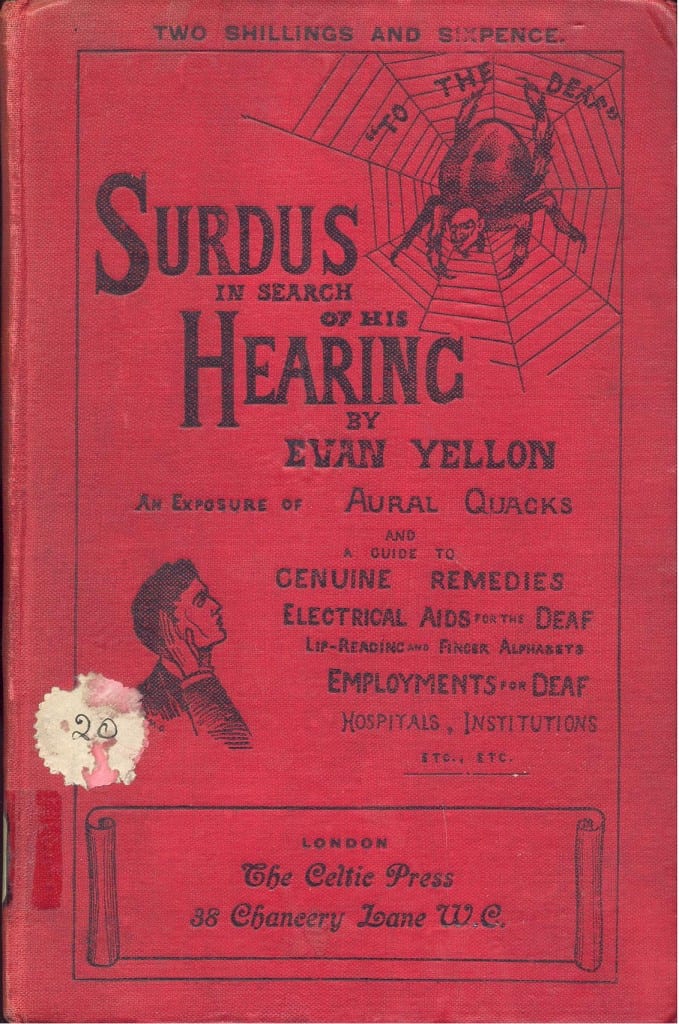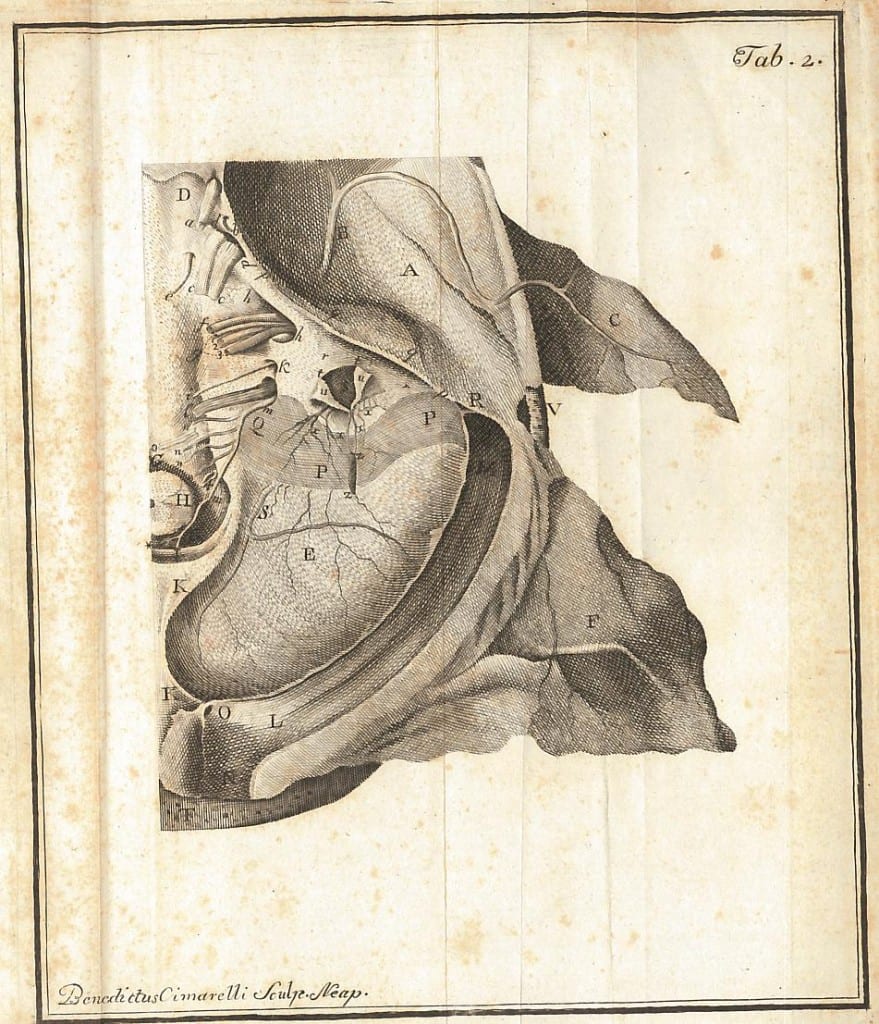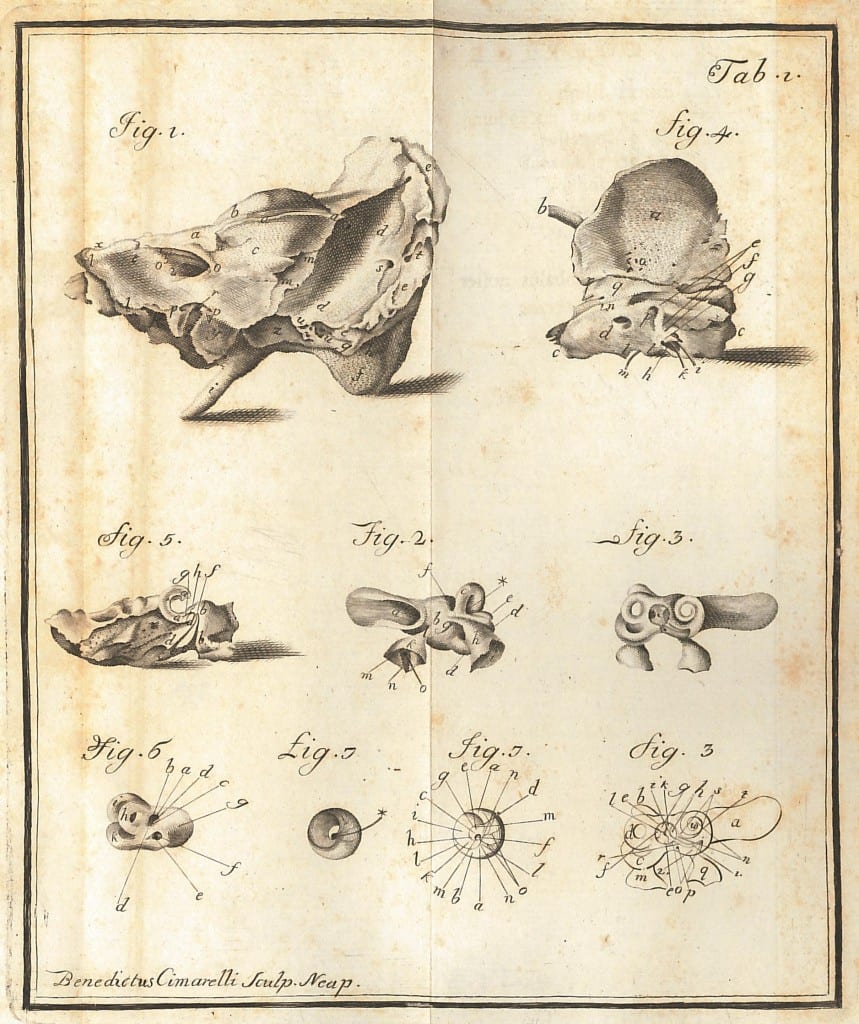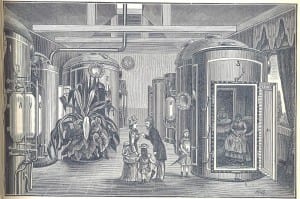Evan Yellon, resident in 1906 at Eton Wick and in 1910 in St.Albans, had made it his business to expose quacks who tried to con money from people with deafness or hearing problems with the lure of ‘cures’. Yellon was himself deaf, and he edited The Albion Magazine for the Deaf.
The Drouet ‘Institute’ was a quack institute, supposedly founded by a ‘Dr. Drouet’ in 1888, established at 72 Regent’s Park Rd. Late 19th century newspapers had adverts for this place as well as ‘articles’ – presumably essentially some form of syndicated adverts purporting to be reportage – praising it –
To cure is more noble than to kill; to save is a grander work than to destroy. The lover of mankind dwells more gladly on the labours of Harvey, Sydenham, Boerhaave, Jenner, Bichat, Pasteur, and Koch than on the triumphs won on the field of Battle. The opening of the Drouet Institute in the North-west of London, as a branch of the great and famous establishment in Paris, brings before the people of England the name of one of these benefactors of the human race. (The Standard)
In the first, 1906 edition of his book Surdus in search of his hearing, Yellon describes a visit to test this quack institute – by this time established at 10 Marble Arch. He describes the secretary’s office –
Open upon the desk was a huge ledger, and standing by it was a pile of cards. Just above the ledger a number of labelled bottles were arranged in careless order; while over the fireplace was affixed a great frame containing a selection of letters thanking Drouet’s for wondrous – in fact, staggering – “cures.” All very artistic!
Yellon was taken to see “Dr. Cuppen” –
The carpet was fine, really fine, and the chairs were good specimens of modern Chippendale, and upholstered with refined regard to fitness […] A pair of tapestry curtains hid from my wandering eye a room adjoining that I was seated in.
The curtains are flung aside and a shortish man beckons him into the consulting room, which “was one better than the secretary’s office, and more than one below the waiting room; for that was a really nice drawing room, while by all the signs this was a quack’s den.” On the desk were a number of dirty instruments. The man before him was got up in a “fantastic fashion”.
His frock-coat was orthodox enough; but he wore with it a shirt of startling hue, adorning the front of which was a “diamond” as big as a marble; and the jaunty butterfly tie vied in hue with the shirt. His patent leather shoes were a trifle cracked, and his face a warning to all observant beholders. The flabby gills, the shifty eyes, and the man’s appearance generally, would effectually have prevented me from being taken in, even had all else failed to do so.
The “Doctor” proceeds to examine Yellon’s ears with a filthy specula – “He took altogether not five minutes to make an examination a famous aurist took twenty-five over; and without the least regard for nose and throat.” Back in the male secretary’s office (the first room) Yellon offers a ‘no cure no payment’ deal – having in the meantime been writing out some bill apparently, the secretary hastened upstairs with Yellon’s offer, and on returning wrote “charge you nothing” on the paper with red ink. Marvelling that anyone should be taken in by the “transparent fakery”, and smiling at “the secretary’s disgusted look when reading my offer to pay by results”, Yellon leaves.
The man behind the Drouet Institute in London was the fraudster J.H. Nicholson, who was sent to prison in 1902. The French doctor Drouet who lent his name to the enterprise, was an obscure G.P. in Paris who died of drink .
Henry Labouchère, that fascinating newspaper man and politician, campaigned against the ‘Institute’ in The Truth. In a 1904 libel action Dakhyl v. Labouchere (Surdus 1906 p.8),
a great deal of light was thrown upon the “Drouet Institute”, and Lord Chief Justice Mathew described it as “a disgraceful institution carried on for unworthy objects by discreditable means.” Since then the fake has dropped out of sight, though an attempt was made to re-start the business under another name.
In the continuance (second volume rather than second edition) of his book Surdus (1910), Yellon describes his earlier visit to the Drouet Institute “on behalf of a journal with which I was then connected” – perhaps The Truth? The “Doctor” who was “Dr. Cuppen” in 1906 now appears under his true name – Crippen. Anyone who knows anything about English crime will be familiar with this name. He had also gone under the name Franckel, in New Oxford St. in 1908, selling a “Catarrh Tonic”, and had used his wife’s surname calling himself “Barron [sic] Mackamotzki”. That this was the same person as Cuppen (also Kupfinn) or Crippen, only emerged in 1910 after his arrest.

As an addendum to the chapter Yellon says (Surdus 1910 p.11-12),
Just as this book was going to press the police discovered that a ghastly murder had apparently been committed at 39, Hilldrop Crescent, London, N.W., the private residence of “Dr.” Crippen. A human body seems to have been cut up and buried in quick-lime in the cellar. […] from what I saw of him he appeared to me about the last man I should expect to be guilty of any great crime. He simply belongs to the tribe of rat-men – the petty swindlers of afflicted people, and the first care of this tribe is to keep their own persons out of danger. Crippen had dissolute rogue written all over his face when I met him, but he did not seem to be the type of man to figure in a crime of passion. Still, no man can accurately forecast the trend of any one human character.
The Albion Magazine for the Deaf (vols 1-3 in the library) Vol 1 (6) p.103
“Dr” H.H. Crippen in the Albion 1910 Vol.3 Albion 1 001
The Standard (London, England), Tuesday, August 25, 1896; pg. 6; Issue 22512
Wellcome Library archives
Yellon, Evan, Surdus in search of his hearing, London (1906 and 1910)
 Close
Close






